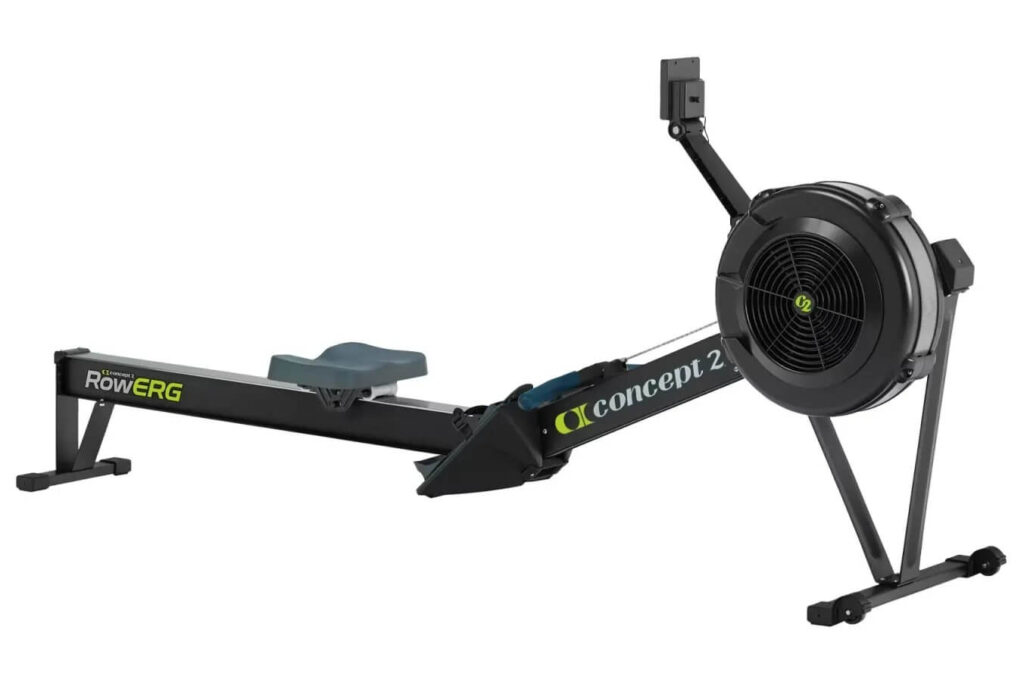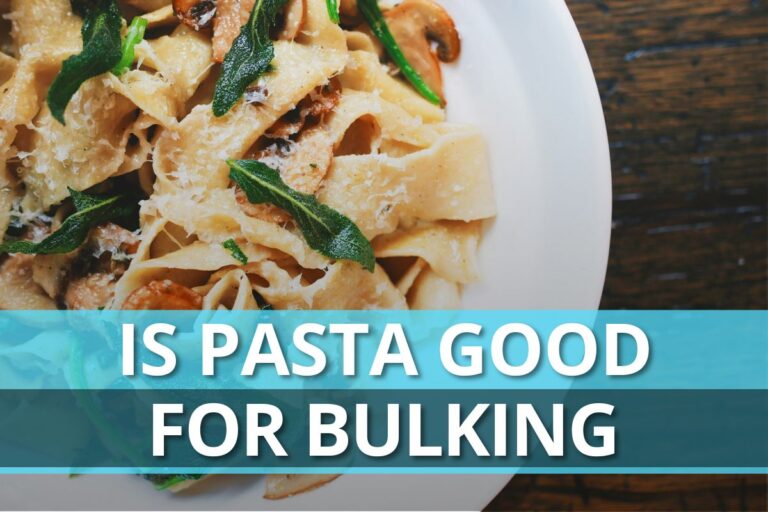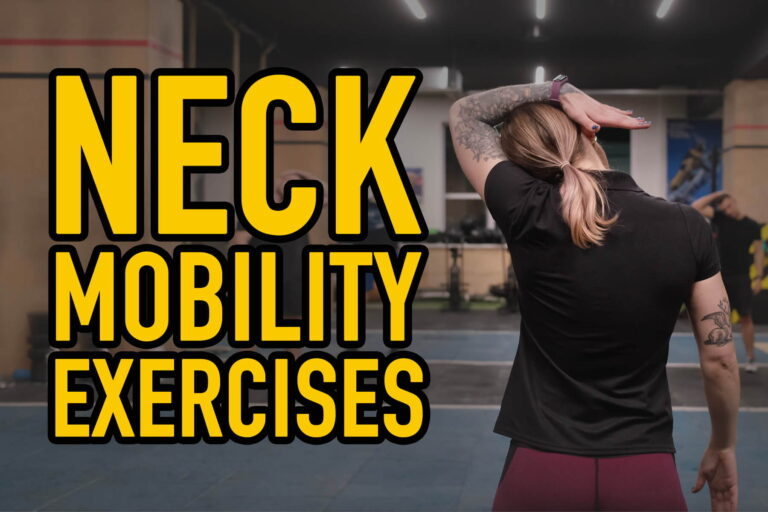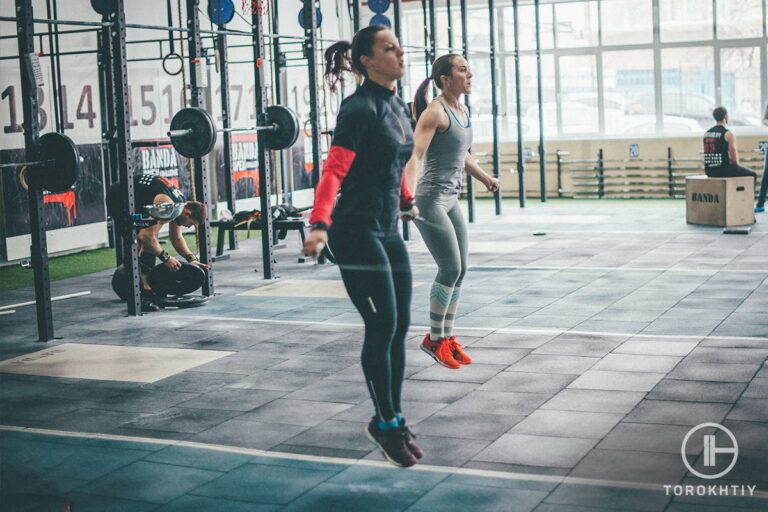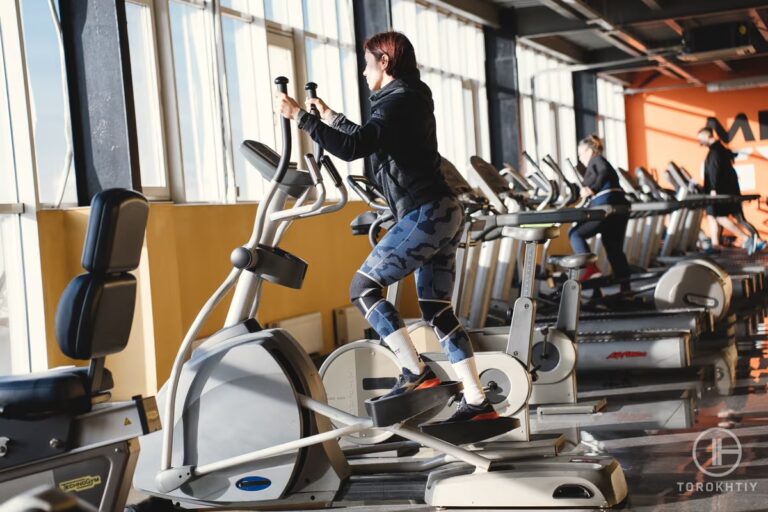How Many Calories Does Rowing Burn: 3 Tips to Maximize Your Energy Output
Don’t see noticeable changes in your body during strength and resistance workouts? Can’t get the desired fitness goals with your regular training regime? Feel a training plateau with no changes in your weight?
Quit doing standard cardio and common exercises. Start rowing right now and you’ll see how many calories does rowing burn. Activate your body and add up the rowing training to diversify your regime.
Wonder how many calories does rowing burn in one session? Get a simple tip: the harder you row, the more energy your body consumes, and the more calories you’ll be able to burn. Rowing for 1 hour at a casual pace burns 300-400 kcal.
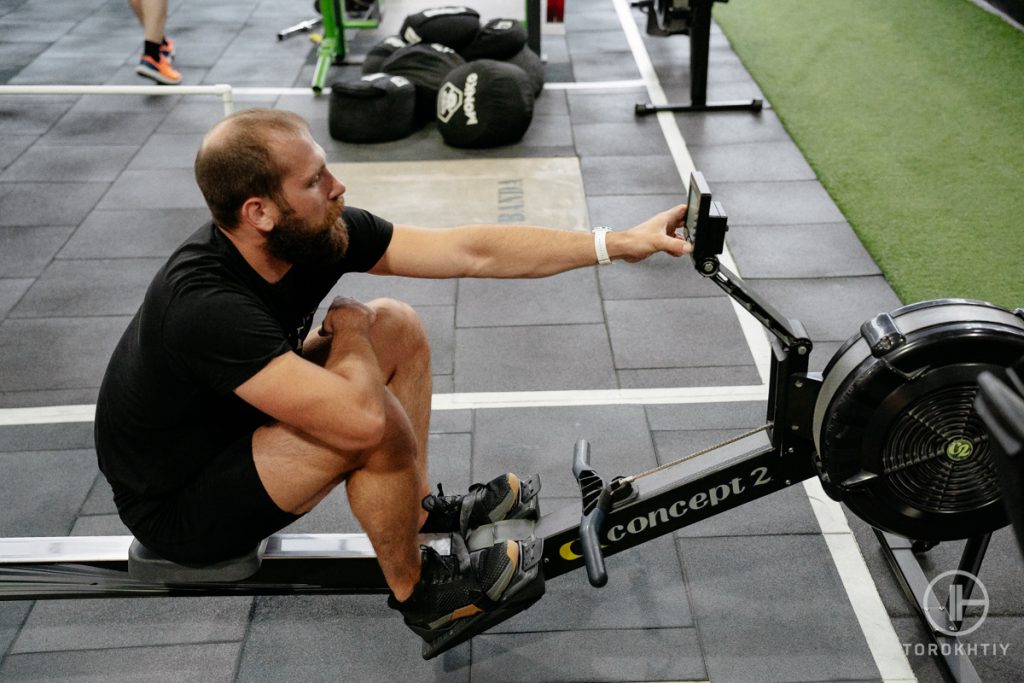
Factors Affecting Calorie Burn in Rowing
Generally, a rowing workout is something new that influences an athlete’s body a little bit in another way. Rowing brings lower impact on the knees and joints compared to other cardio trainings, however, you’ll get the same or even better results.
There’s no explosive and harsh movement like with any HIIT exercises, or repeating strikes on the ground when running or jumping the plyo box. Thus, rowing is a low-impact cardio training that doesn’t put an athlete at risk of injury and gives your ligaments a load off.
Although, there are several questions – is rowing effective as other cardio workouts? And how many calories do you burn on a rowing machine? Let’s outline these points and dive deeply into the aspects influencing the rowing workout efficiency, the optimal duration of rowing, and the amount of calories that an athlete can burn.
By giving a milder impact, it doesn’t mean that rowing is a low-effort cardio. It involves the whole body’s muscles to perform rowing movements. It helps to burn calories thanks to such an effective cardiovascular session by involving muscular endurance.
Rowing is not just about cardio, it’s also about power and stamina, and that’s why rowing athletes are well-shaped and muscular – they all have ripped back, shoulders, and arms. Moreover, it requires engaging the abdominals to transfer the leg power to the hand pulls.
Let’s define which factors can influence the amount of calories you’ll burn in one rowing session.
1. Your Body Weight
The more you weigh, the more calories you’ll manage to burn. Because with greater weight, your body requires more energy. If you push yourself harder to perform rowing, the more intensively you move, the more calories you’ll manage to burn.
2. The Intensity of the Workout
The intensity of training plays a crucial role in the fat-burning process. The vigorous rowing performance will help to burn more calories over a shorter time, than when having moderate-pace training for a longer period.
That means that the maximum effort in a maximum short time will bring better results. Working out in higher pulse zones enables you to burn calories quicker.
Speaking about rowing, it’s a high-intensity cardio training that can help you burn calories quickly. So, how many calories does rowing burn?
For instance, an athlete of weight 135 lb can burn up to 110 calories in 15 minutes of moderate rowing. Meanwhile, it’s possible to burn 500-700 calories in one hour of rowing at above-average intensity of average power of 100 watts.
3. The Duration of the Rowing Training
If you row for a longer time, i.e., at least 30 minutes, it means you’ll be able to burn more calories. However, as we mentioned in the previous section, workout intensity also matters, even if you train less.
You may use a calculator to count approximate calories when rowing. To determine calories burned while indoor rowing you need to fill in your weight, and rowing activity rate, add the rowing session duration (in minutes), and press the button to calculate.
Also, there’s another way to define the rowing calorie burn. Here you need to use the MET (metabolic equivalent) formula which is a ratio between your active metabolic rate and RMR (resting metabolic rate) or BMR (basal metabolic rate).
For example, the MET value for rowing at a moderate pace of 100 watts average is 7. To define calories burnt during your training, you need to use the following formula:
MET X 3.5 X BW (KG) / 200 = KCAL/MIN
Let’s count this formula: for instance, your weight is 165 lb, and you do rowing for 45 minutes regularly, so the number of calories you burn per minute will be:
7 X 3.5 X 165/ 200 = 20 KCAL/MIN
Hence, you’ll manage to burn 900 calories in 45 minutes of a moderate-intensity rowing session. These data can be defined easily by applying specific formulas including your weight, height, and the defined numbers. But, it’s impossible to know the precise ratio of calories you’ll burn with rowing by calculations.
Calorie Burn Estimates for Different Rowing Activities
Rowing is a great workout to burn calories by increasing the resistance to row with greater power output and higher watts or train at a moderate pace by keeping a stable and even stroke rate. If your target is rowing for calorie burning and getting rid of fats faster you can transform your rowing session into a HIIT workout including intervals of accelerations.
Perform several short reps of repetitive high-intensive rowing with short rests in between, Such intervals will assist you in developing general strength, endurance, and building a stable rowing pace at high speeds.
It’s obvious that you’ll succeed in burning a different amount of calories by choosing low, moderate, or high-intensity rowing. That’s a great privilege of the rowing machine: you can easily switch the resistance up or down depending on your strength and condition, making it easier to progress over time.
So, let’s define how many calories do you burn rowing for 30 minutes at different intensities.
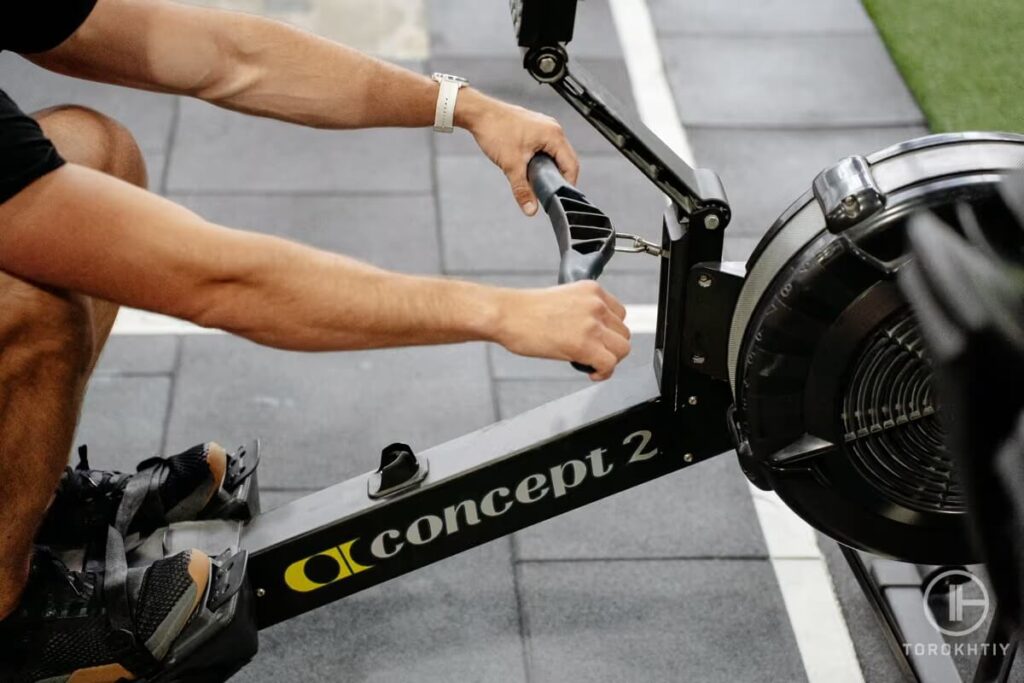
1. Casual/Recreational Rowing
If you are a newbie in rowing, but want to enhance your muscular endurance, have a rowing workout for 30 to 45 minutes maximum at a moderate pace. As your fitness level improves, you will be more resistant to injuries, joint strains, and muscle fatigue.
An indicator of the great number of calories you burn during low-intensity rowing is around 300-400 calories in an hour.
2. Moderate-Intensity Rowing
When you already have the initial experience in training on the rowing machine and have gained enough strength for the next level, then it’s time to push yourself harder and increase the resistance. You should start training from 60-70% of your maximum resistance level.
To burn more calories you can speed up to your maximum, like in the HIIT workout. Focus on your SPM (Stroke Per Minute) you should increase by 2-3 points each time to challenge your body. Start with a slow pace maximum of 20 SPM. Each time you progress, aim for higher SPMs. Try to keep this tempo for a few minutes to help you to adapt to such an intensive pace. The faster you row, the more fat you’ll burn.
Hence, you’ll burn 400-600 calories on average at a moderate intensity during one-hour rowing training (the calorie amount depends on the athlete’s weight).
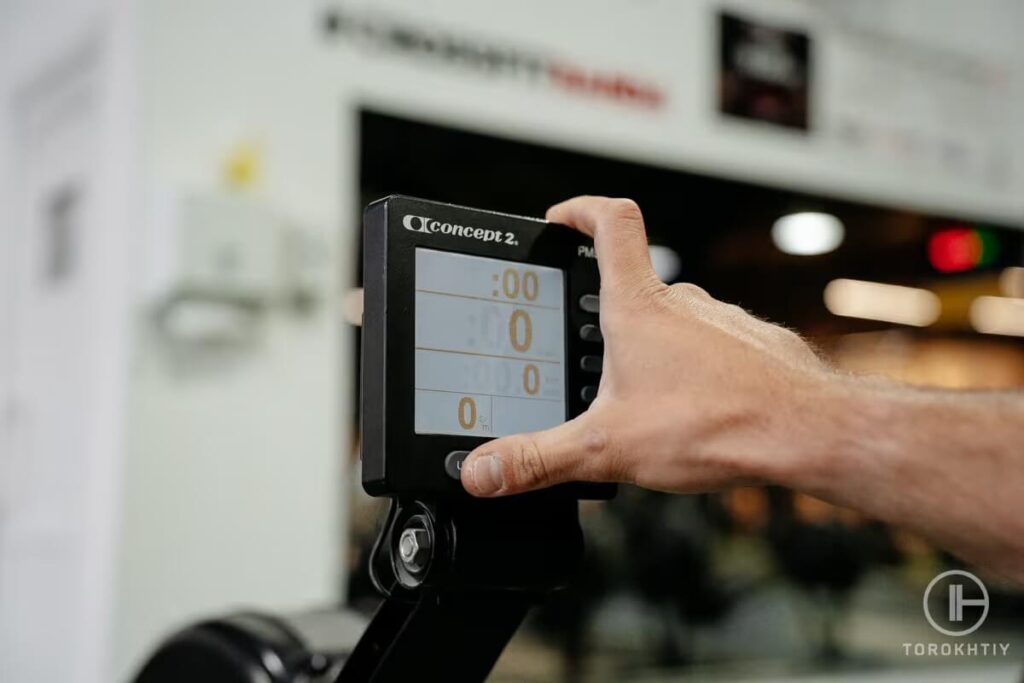
3. High-Intensity/Competitive Rowing
Another effective way to burn calories is to combine cardio-oriented rowing with a resistance workout involving personal body weight. Such a mix will make your body perform better by developing aerobic and anaerobic capabilities. You’ll burn up to 500-800 calories in one hour (depending on the weight mostly).
This high-intensity rowing training will make your body activate the already existing sugar-based energy supply. Also, remember that rowing is about leg work. So, work hard, burn more calories, and become much stronger.
| Rowing pace | Casual | Moderate | High-intensity |
|---|---|---|---|
| Duration | 1 hour | 1 hour | 1 hour |
| Workout type | rowing | rowing + pace acceleration | rowing + resistance training + body weight |
| Calories burnt | 300-400 kcal | 400-600 kcal | 500-800 kcal |
Indoor Rowing Vs. Outdoor Rowing
Both being full-body training, using the same movements and strokes, and burning almost the same amount of calories – these are the common features of indoor and outdoor rowing. However, it’s still different in complexity, muscles worked, and overall performance.
What’s good about indoor rowing is that the movements mimic each rowing stroke while rowing on the water: drive, catch, recovery, and finish. It’s true that you should engage the same muscle groups, but your core will be more engaged in outdoor rowing.
As you adjust yourself to the weather conditions and current flow, you need to be highly careful, focused, and keep the balance with the help of stabilizing muscles.
While rowing both on a rowing machine and a boat, it’s important to involve your power, endurance, and proper technique. Concerning the resistance, you can manage it while rowing indoors. But, with outdoor rowing, you have no opportunity to change it, as you move the oars through the water and move with the flow or against it.
| Criteria | Indoor rowing | Outdoor rowing |
|---|---|---|
| Muscles worked | full-body workout (85% of muscles involved) | |
| no need to activate abs greatly | more core involved; requires more balance | |
| Resistance control | can manage the resistance manually | unlimited resistance, you row against or with the water flow |
| Applicability | can row whenever and wherever you want | depends on weather conditions |
| Calories burnt | up to 400 kcal in 30 minutes | 500 kcal in 30 minutes |
However, you need to be more concentrated and keep better balance while rowing in the shell, with your abs tighter to hold your trunk straight. While indoor rowing can be done in any weather.
How many calories do you burn rowing for 30 minutes if training outdoors? The amount of calories remains almost the same compared with indoor rowing. You’ll be able to burn 500 calories on average at a moderate pace in 30 minutes. However, it’s difficult to say the exact number as it depends on many factors.
All in all, it’s difficult to say what rowing type is better, it’s more a matter of personal needs and preferences. Both canoe/boat rowing and rowing on a machine engage your body and mind, but in a bit different ways.
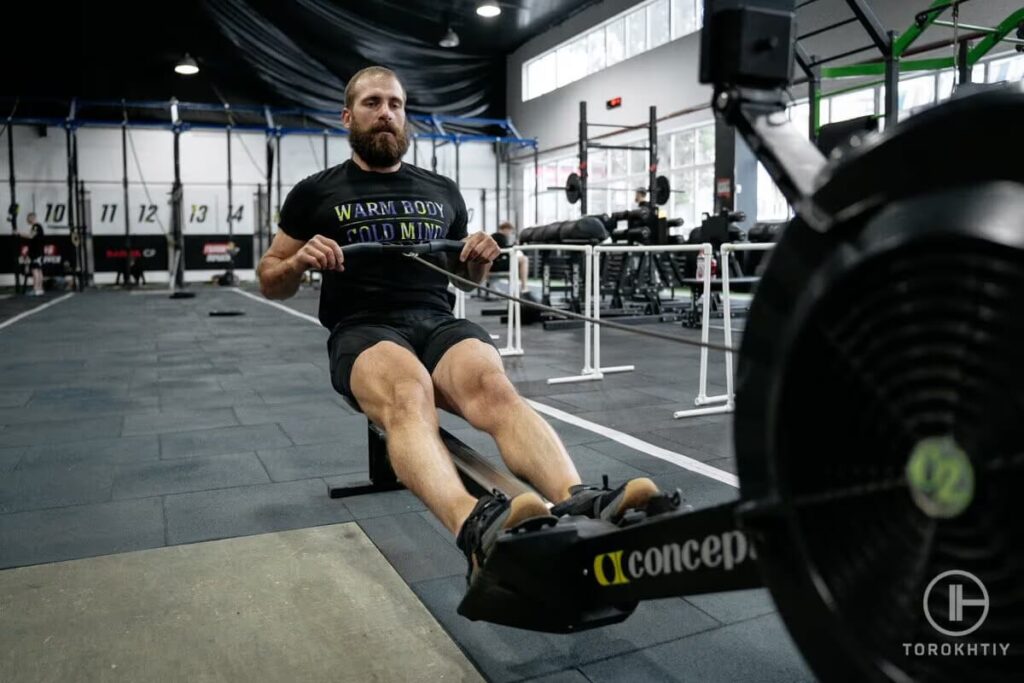
Rowing Vs Other Exercises (In Terms Of Calorie Burn)
Let’s compare the efficiency of a rowing workout with other cardio training like cycling and running. Then, we’ll be able to define what workout is more energy-efficient, so you’ll be able to burn more calories.
1. Rowing vs Cycling
Rowing and cycling are both cardio workouts that strengthen your cardiovascular system, increase general power and endurance, and develop the muscles. Also, these are low-impact workouts that have much less stress on your knees and joints unlike other cardio training, i.e., plyo and running.
Although rowing is a whole-body activity, cycling targets mostly the lower body.
Speaking about calorie burn, cycling training of moderate intensity will help you to burn around 400-500 calories in 30 minutes. While more intensive training, it’s possible to burn approximately 550-800 calories in 45 minutes.
So, if you compare these two activities, you’ll burn a bit more calories when rowing as it engages the total body while cycling you activate your leg muscles and core.
Tips From the Champ
To start rowing, or to propel your technique and get rid of fat deposits, we advise you to try Concept2 RowErg PM5. This trainer meets the goals whether you’re a beginner or an experienced athlete.
The RowErg works smoothly as it uses air resistance to create tension while you pull the handle. You have full control of your resistance: the quicker you row, the harder the workout you’ll get.
Olympic Weightlifting Champion
2. Rowing vs Running
Running is a high-intensity and high-impact training that requires a lot of endurance and cardiovascular skills to maintain a stable speed and running pace. This activity involves constant work of your body that results in better calorie burn and an increasing metabolism process.
That’s why running is a great option to burn calories, lose weight, and become more endurant.
Rowing is more about growing muscular endurance and short energy bursts from the muscles to push yourself harder with each stroke.
Does rowing burn more calories than running? If we take into account a training session of a duration of 30 minutes, you’ll be able to burn more calories while running – 360 calories at 10 mph. Moreover, you’ll succeed in burning around 600 calories in one hour by running at the same pace.
So, running is more effective than rowing as it constantly keeps the whole body in motion and coordination.
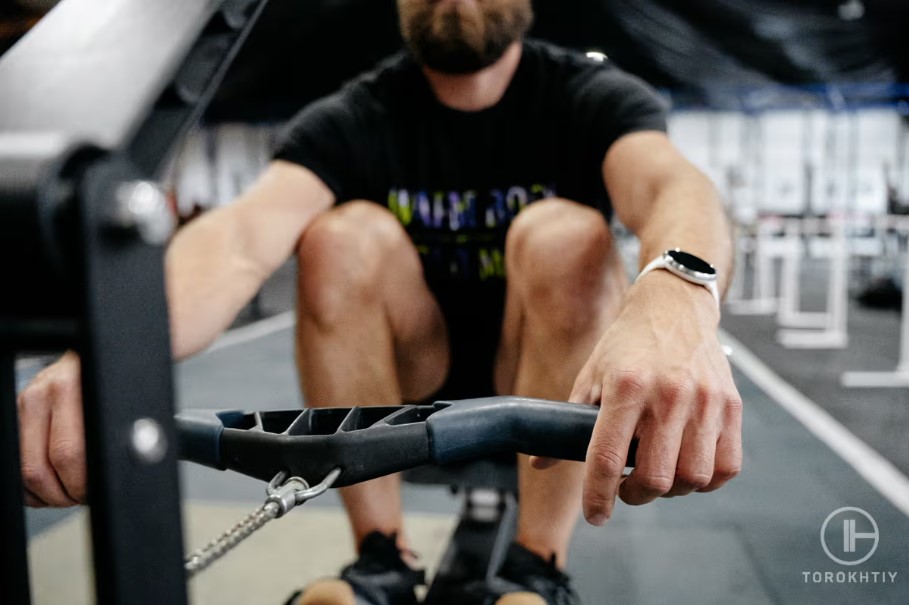
3. Rowing vs HIIT
These two sports activities are closely interconnected because rowing machine workouts can involve high-intensity rowing.
Both training types can help you to lose weight and become fitter by getting a leaner and shaped body. Indeed, this is a great combo training that will improve your aerobic and anaerobic skills and work out the entire body.
Since HIIT workout includes explosive movements for a short period that is followed by a recovery, rowing training can also include such high-intensity intervals, i.e., rowing at 70-80% of your heart rate maximum. So, while performing HIIT exercises you’ll manage to burn at least 500 calories in 30 minutes.
| Aspects to compare | Rowing | Elliptical trainer | HIIT (i.e., burpees) |
|---|---|---|---|
| Plane of movement | Seated exercise, you row in a horizontal motion plane | Upright position, you move in a standing position | Interchange standing, jumping, plank position |
| Type of activity, range of motion | Cardio workout. The handles are fixed, you need to follow the right technique and alternate the pulling and pushing motions | Cardio workout. It’s like running with more resistance and a fixed range of motion; combines walking and stair-climbing movements | High-intensity calisthenic exercise. Jumping from a standing position to a plank horizontal plane, then jump off from the ground |
| Muscles worked | Primarily targets upper back, hamstrings, glutes | Primarily works quadriceps, calves, deltoids, hamstrings, glutes | Full-body exercise, works glutes, quads, core, calves, shoulders, chest, triceps |
| Calories burnt | up to 800 kcal in 1 hour | up to 700 kcal in 1 hour | up to 700 kcal in 1 hour (or 20 kcal for 40 burpees) |
3 Tips To Maximize Calorie Burn In Rowing
There are a lot of options to try to increase the intensity of your rowing workout and burn fat deposits efficiently. You can perform ladder drills, high-intensity intervals, Tabata, and many other exercises to involve your body and engage even more muscles by working them out thoroughly.
1. Add More Explosive Motions
Incorporate a series of 10 fast, explosive strokes. Lean backward with all the strength in your legs and row with as much strength as you can. Take a short rest between the reps at normal intensity, then repeat the set.
2. Do Sprints to Develop Endurance
Try an exercise called a “ladder drill” which means speed increases for a specific time. This exercise will help you to develop your pace, as a result, you’ll get a higher SPM. You need to increase your stroke-per-minute rate by one or two points for each rep.
The target point is to get 30 SPM and hold it for a full minute. Then, gradually decrease your SPM to the initial indicator (around 22 SPM).
3. Keep the High Pace for a Longer Time
It looks like a HIIT rowing workout when you gradually raise your pace in order to work in high pulse zones, i.e., aerobic and anaerobic. Start from a warm-up and as you keep a stable pace, accelerate until you get a high tempo at 80-85% of your MaxHR, and can hold it for a long time.
CONCEPT2 Rowerg PM5: A Rowing Machine We Recommend
To start rowing, or to propel your technique and get rid of fat deposits, we advise you to try Concept2 RowErg PM5. This trainer meets the goals whether you’re a beginner or an experienced athlete.
The RowErg works smoothly as it uses air resistance to create tension while you pull the handle. You have full control of your resistance: the quicker you row, the harder the workout you’ll get. It’s equipped with a spiral damper that enables you to manage the airflow to the flywheel. So, you can adjust the stroke to your level.
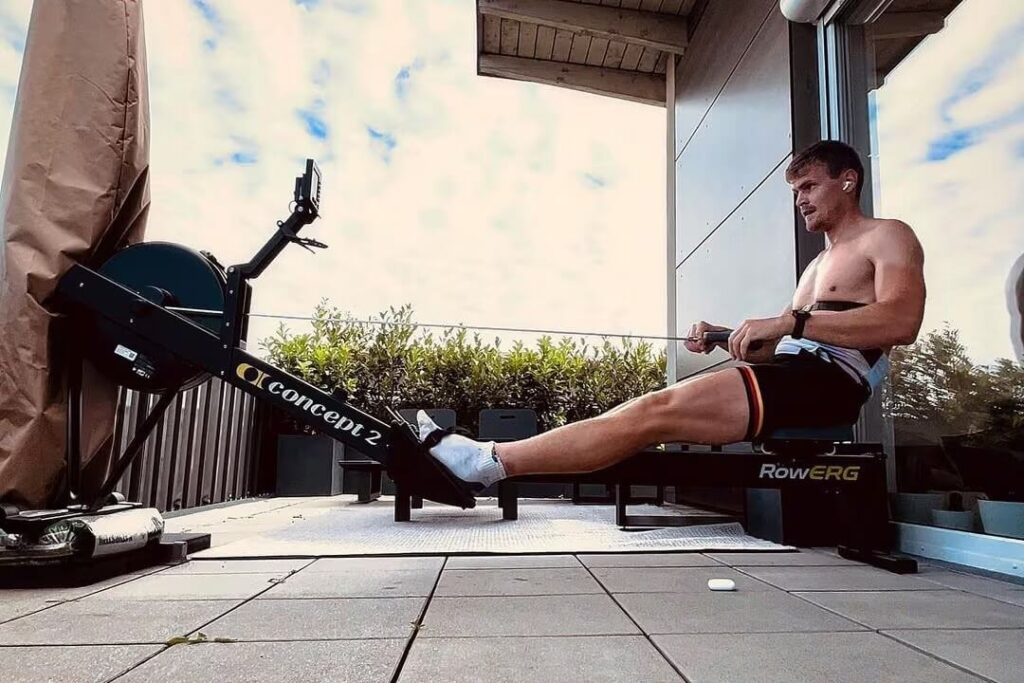
Talking about its specs, the weight is 57 lb for standard legs and 68 lb for taller legs, and weight capacity is 500 lb. The rower’s dimensions are 14″ (standard leg)/ 20″ (tall legs) x 24″ x 96″, with a footprint of 8’x2′, which enables it to store it easily, breaking it down into two segments.
What’s more, you can track your performance due to the PM monitor. You can connect it via Bluetooth to various fitness apps and follow your progress. The Concept2 rowing machine is available with either standard or tall legs, making it highly customized to any user.
FAQ
How Many Calories Do You Burn In 30 Minutes On A Rowing Machine?
With a moderate effort of 100 watts, you’ll be able to burn 160-200 calories in a rowing machine during a 30-minute training session.
How Much Rowing Should I Do To Burn 1,000 Calories?
All numbers depend on several factors, i.e., your body composition, fitness level, and workout intensity. Nevertheless, to burn 1,000 calories you should row for two hours at a moderate pace. If you’re taller, one hour and a half will be enough to gain such an indicator.
Is Rowing Good To Lose Belly Fat?
Yes, you can add rowing training to lose belly fat because this workout will activate your whole body to perform each stroke with maximum efficiency.
Since you constantly move by pushing yourself with your legs and pulling the handles with your hands, you incorporate your core to keep your trunk straight and stabilize it in every rowing phase. So, such motions help to tone up your stomach. But, together with the proper diet and training regime, you’ll get the desired result.
Conclusion
It needs to be said that the key point of the questions regarding how many calories does rowing burn is the idea that the harder you work, the more energy your body consumes, and the more calories you’ll lose.
Want to make this process easier? Ask us directly below and our sports geeks will tell you how to preserve the right rowing technique and add up more intensity.
Due to more explosive strokes, speedy rowing, and high resistance level, you’ll increase your cardiovascular stamina and build muscular strength while keeping your body at the maximum possible performance output for a longer time.
Also read:
- Best Recumbent Bike Rower
- Rowing Machine vs Treadmill
- Rowing Machine vs Stationary Bike
- Water Rower vs Magnetic Rower
- Best Budget Rowing Machine
- Best Compact Rowing Machines
- Best Rower Under 1000
- Best Rowing Machine for Beginners
References:
- Monitoring of performance and training in rowing // Pubmed: https://pubmed.ncbi.nlm.nih.gov/16026173/
- Calorie Calculator // Concept2: https://www.concept2.com/indoor-rowers/training/calculators/calorie-calculator
- High-Intensity Interval Training for Rowing: Acute Responses in National-Level Adolescent Males // Ncbi: https://www.ncbi.nlm.nih.gov/pmc/articles/PMC9265424
- A kinematic comparison of ergometer and on-water rowing // Sage Journals Home: https://journals.sagepub.com/doi/10.1177/036354658901700310
- Interrelations between power, force production and energy metabolism in maximal leg work using a modified rowing ergometer // Tandfonline: https://www.tandfonline.com/doi/abs/10.1080/02640419308729990
- Incorporating Sprint Training With Endurance Training Improves Anaerobic Capacity and 2,000-m Erg Performance in Trained Oarsmen // Journals: https://inlnk.ru/YAymB7
- HIIT enhances endurance performance and aerobic characteristics more than high-volume training in trained rowers // Tandfonline: https://inlnk.ru/AK1GnO
Why Trust Us?
With over 20 years in Olympic Weightlifting, our team does its best to provide the audience with ultimate support and meet the needs and requirements of advanced athletes and professional lifters, as well as people who strive to open new opportunities and develop their physical capabilities with us.
By trusting the recommendations of our certified experts in coaching, nutrition, dietology, and sports training programming, as well as scientific consultants, and physiotherapists, we provide you with thorough, well-considered, and scientifically proven content. All the information given in the articles concerning workout programming, separate exercises, and athletic performance, in general, is based on verified data. We ensure that you can rely on our professionals’ pieces of advice and recommendations that can be treated as personalized ones which will benefit you and fully meet your needs.
The product testing process is described in more detail here
Author: Ihor Shymechko
Pro Olympic Weightlifter, Coach
Best Results: Snatch – 208 kg,
C&J – 240 kg
Ihor has been a professional weightlifter since 1996, boasting over two decades of competition experience. His notable achievements include clinching the European Championship in 2009 and securing a silver medal in the 105kg division at the Senior World Championships in 2011. Ihor represented his country in the 2008, 2012, and 2016 Summer Olympics. After retiring from competitive weightlifting, he transitioned to coaching, leveraging his vast experience to guide athletes who now compete on both national and international stages.


